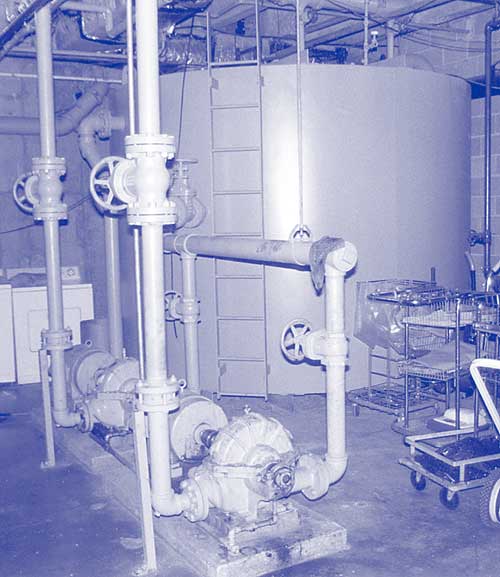Overview of …
3.3 Service Water Pumping
This part of the Energy Efficiency Manual presents all the energy conservation measures that apply to pumping of domestic water or service water. Many facilities need to have their own pumps to provide service water pressure, because the public water utility does not provide adequate pressure or it is unreliable. For example, tall buildings commonly have their own service water pumps to serve upper floors. The pumps for this function may be major consumers of energy, especially if they run continuously.
Also, water pumping is a major energy use in facilities that have their own sources of water, typically from wells. Or, the facility may have its own pumps for applications that need water at exceptionally high pressure.
Most facilities have small pumps for recirculating hot water. These pumps typically consume only a small amount of energy. However, there are cases where the design of the service water system requires larger pumps for recirculation.
You may be able to save a significant amount of energy by improving your water pumping arrangements. This Subsection gives you all the options, along with guidelines to help you select the best methods for your application.
Click here to return to the Table of Contents


